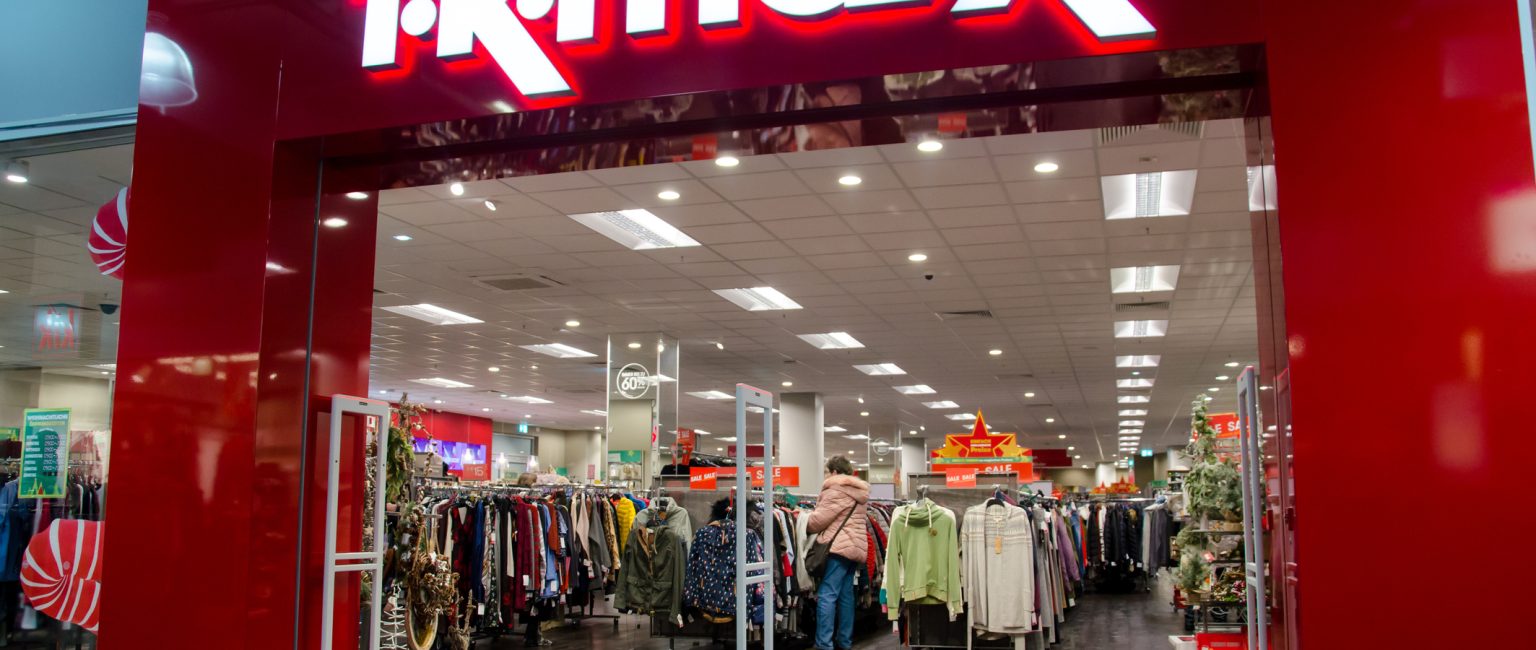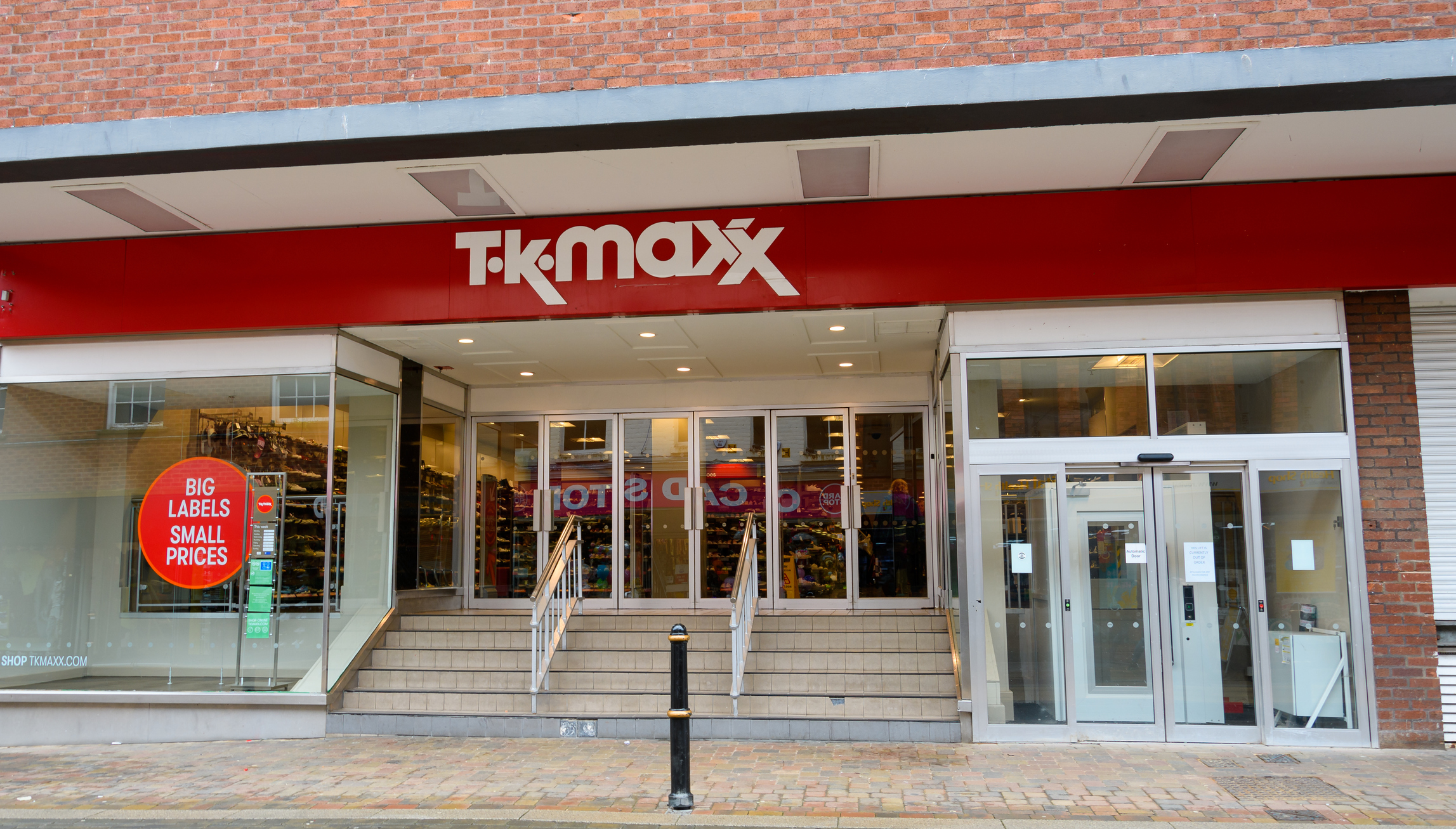Surprise, discovery and designer discounts: How TK Maxx won over Aussie shoppers

Renowned for designer items at low prices, major outlet chain TK Maxx has carved a successful niche in Australian retail. We asked the experts how they achieved notable growth in a challenging retail environment.
Launching in Australia in 2017, the US chain initially acquired 35 Trade Secret discount department stores in NSW, Victoria, and Queensland.
The brand soon broadened its reach within those states followed by the arrival of new outlets in South Australia, Western Australia and Tasmania.
At present, there are 80 TK Maxx stores in Australia.
Danny Martin, senior industry analyst at IBISWorld, considers this extremely rapid growth for an international retail brand entering a new market.
“Expansion within clothing and retail tends to occur much slower because the industry is considered mature, with department stores currently in the decline stage of their life cycle,” Mr Martin told realcommercial.com.au.
“This rate of growth shows TK Maxx is bucking the trend and penetrating a largely stagnant market, as bricks-and-mortar operations begin to fall out of favour with many buyers.”

TK Maxx distinguishes itself through an opportunistic-buying business model, selling major brands and designer labels at a discount. Picture: Getty
Last month, TJX International, the division of TJX Companies that runs TK Maxx outlets in Europe and Australia, reported a 4% rise in net sales to AUD $2.57 billion compared to $2.39 billion in the same period from the previous year.
Mitchell Taylor, a global consultant at Simon-Kucher & Partners, said the company has achieved such significant global scale that it no longer discloses revenue for each individual market.
“But you can make some calculations and surmise they’re doing very well in Australia given the number of outlets here. It’s clear their model is working.”
An opportunistic business model
While discount stores have long been a part of the retail landscape, TK Maxx distinguishes itself through an opportunistic-buying business model, selling major brands and designer labels “at prices typically ranging from 20% to 60% below their full retail value.”
“Essentially, they engage with a diverse range of manufacturers to secure low-cost deals,” explained Mitchell Taylor.
“Manufacturers may have surplus inventory they wish to liquidate, or TK Maxx might purchase end-of-season products that are no longer sold by mainstream retailers. Or they may acquire one-off bulk deals based on volume,” he added.
“This strategy enables them to acquire products at significantly reduced prices, allowing them the flexibility to establish their own retail prices. It’s a consistent pricing strategy based on a low-cost sourcing model.”
Queensland University of Technology retail expert Gary Mortimer noted that while TK Maxx sells a wide range of products, the majority of their stock is fashion.
“And fashion has a very short shelf life, which means they’re able to access end of season runs, smaller ranges of sizes and cancelled orders pretty quickly.”
View this post on Instagram
Surprise and discovery
Another key strategy employed by TK Maxx is unconventional store layouts, which the company says creates a unique “treasure hunt” shopping experience for customers.
Gary Mortimer calls this strategy the “surprise and discovery” approach.
“TK Maxx stores are designed a bit like Nordstrom Rack, which was one of the first bargain retailers in the US. They have no stock rooms; everything is put straight out to the floor in a very disorganised way,” explained Mr Mortimer.
“This fosters an atmosphere of discovery where you might walk in and find that really nice jacket you were looking for that’s been heavily discounted and in exactly your size. Or you might find nothing, but it’s that shopping hunt vibe which appeals to the knowledgeable shopper.”
Danny Martin noted how this distinct store layout promotes browsing among shoppers, which is fundamental to the TK Maxx brand.
“Fast-rotating stock encourages consumers to return often to search through the store for potential bargains.”
Niche markets and the ‘lipstick effect’
Upon entry into the Australian market in 2017, there were expectations TK Maxx would introduce strong competition to department stores.
However, industry experts indicate this is not how the story has played out.
“I don’t think the TK Maxx model has significantly impacted existing discount department stores because their offerings are different,” Gary Mortimer said.
“85% of Kmart’s fashion range is private label products, while Target and Big W follow a similar approach.”
Mr Mortimer suggested TK Maxx may be impacting retailers like Harris Scarfe and DFO, which offer a similar range of products at discounted prices.
“They’re the closest comparable competitors in Australia.”
Mitchell Taylor likened TK Maxx to Aldi; brands both successfully operating within their respective niches.

Store layouts create a unique “treasure hunt” shopping experience for customers. Picture: Getty
“Aldi commands about 10% of the market share in Australia, which is considerable, but I don’t see them reaching the scale of Coles or Woolworths due to their operational model,” he said.
“Likewise, TK Maxx is unlikely to expand to the level of Kmart, nor will they want to. They will continue to successfully operate within their current market segment.”
Danny Martin said TK Maxx had tailored its operations to focus on a specific demographic of budget-conscious consumers seeking premium products at more affordable prices – an area that has experienced significant growth in recent years.
“IBISWorld estimates the consumer price index to have escalated at an average annual rate of 4% over the past five years, with cost-of-living pressures having brought about what is known as the ‘lipstick effect’,” he explained.
“This describes a phenomenon where Australians continue to look to spend on discretionary, small luxuries in tough times, rather than allocating that money for more expensive luxuries like travel and large purchases.”
Susan Martin, CEO of Smart In Planning, agrees, noting that in tough economic times, consumers tend to “shop down”.
“TK Maxx is capitalising on satisfying the desire to buy recognised brands at a discounted price. And customers will always appreciate genuine value.”
Future expansion
According to Mitchell Taylor, TK Maxx is planning to expand its presence by opening additional stores throughout the country.
“You can already observe the areas they are targeting based on existing store locations. I believe there are certain regions within capital cities that they will likely avoid due to specific demographics or high leasing costs,” Mr Taylor said.
“I don’t think they’ll appearing everywhere like supermarkets over the next 10 years, but they’ll absolutely be looking to increase store locations.”

In tough economic times, consumers tend to “shop down”. Picture: Getty
Gary Mortimer agrees, noting the company will actively seek opportunities where large retail tenants are preparing to close.
“This has already occurred in certain areas. They have taken over the Myer store that closed in Brisbane’s Brookside Shopping Centre as well as the one in Hurstville. Looking ahead, TK Maxx is poised to secure any ready-made retail spaces that become accessible.”







